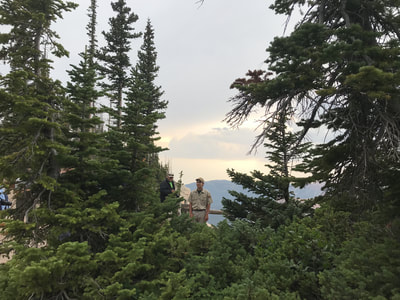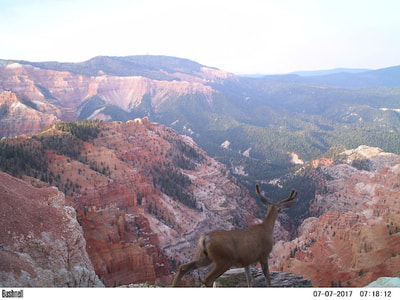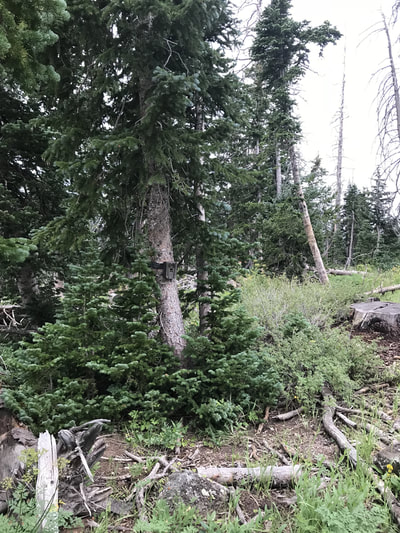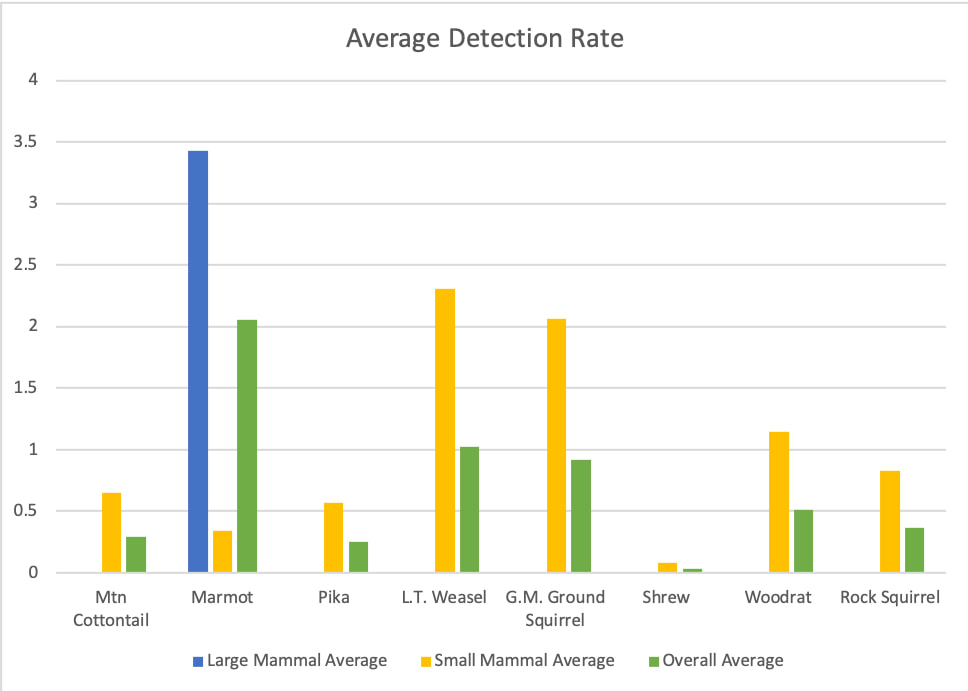Undergraduate Education
Part of Utah State University Extension’s mission is to provide opportunities for young scientists to gain experience with the scientific method through hands-on research. Often college students can conduct research for undergraduate class credit; and present their findings during campus research symposia. The process provides students with the experience needed to be competitive in the job market or for graduate education.
This study is conducted by Ethan Hammer and Natalie DeSouza in cooperation with Cedar Breaks National Monument (CBNM). During the summer and fall of 2017 through 2019, we used trail cameras to conduct a systematic survey of CBNM to determine the presence and relative abundance of mammals within the national monument. We acquired undergraduate research funding to partially support this project. To date, our project has added 7 species to the mammals list at CBNM as well as changed the abundance status of a few species such as: Black Bear, Least Weasel, Mountain Cottontail, Ringtail, and Rock Squirrels.
This study is conducted by Ethan Hammer and Natalie DeSouza in cooperation with Cedar Breaks National Monument (CBNM). During the summer and fall of 2017 through 2019, we used trail cameras to conduct a systematic survey of CBNM to determine the presence and relative abundance of mammals within the national monument. We acquired undergraduate research funding to partially support this project. To date, our project has added 7 species to the mammals list at CBNM as well as changed the abundance status of a few species such as: Black Bear, Least Weasel, Mountain Cottontail, Ringtail, and Rock Squirrels.
Mammals of Cedar Breaks
We finally finished it! In 2019, we decided to create a field guide for visitors of Cedar Breaks that highlights the great trail camera photos that we acquired during our study. After months of editing, we are happy to present our Mammals of Cedar Breaks field guide. Looking to visit Cedar Breaks National Monument soon? You can download this guide!
Your browser does not support viewing this document. Click here to download the document.
Our favorite pictures captured in May and June, 2018
Data Update 2018
In 2018, we used both the traditional ('large mammal' method to set up trail cameras, by placing camera about chest high off the ground, and a new way to detect small mammals. For the 'small mammal' set up, we placed cameras at ground level and focused them on a corrugated plastic tube about 2 feet away. Here is a preview of the detection rates (# animals detected/# nights the camera was out) for some of the species we detected. We compared the detection rate of the 'large mammal' set up to that of the 'small mammal' set up.
In 2018, we used both the traditional ('large mammal' method to set up trail cameras, by placing camera about chest high off the ground, and a new way to detect small mammals. For the 'small mammal' set up, we placed cameras at ground level and focused them on a corrugated plastic tube about 2 feet away. Here is a preview of the detection rates (# animals detected/# nights the camera was out) for some of the species we detected. We compared the detection rate of the 'large mammal' set up to that of the 'small mammal' set up.
|
The 'small mammal' set up did quite well compared to the 'large mammal' set up, for detecting medium-sized mammals.
|
As you might imagine, the 'small mammal' set up did not perform as well as the 'large mammal' set up, for detecting large mammals such as large carnivores. Here we display the detection rate combining both methods for early summer (round 1) and late summer (round 2).
|
Our Favorite Photos From May-June 2019
Presentation at the National Wildlife Society
We had the opportunity to present our data at several venues. The presentation of the final project was given to the National Wildlife Society Conference in Reno, Nevada. You can view a PDF of that presentation below. You are welcome to download it too.
Your browser does not support viewing this document. Click here to download the document.






